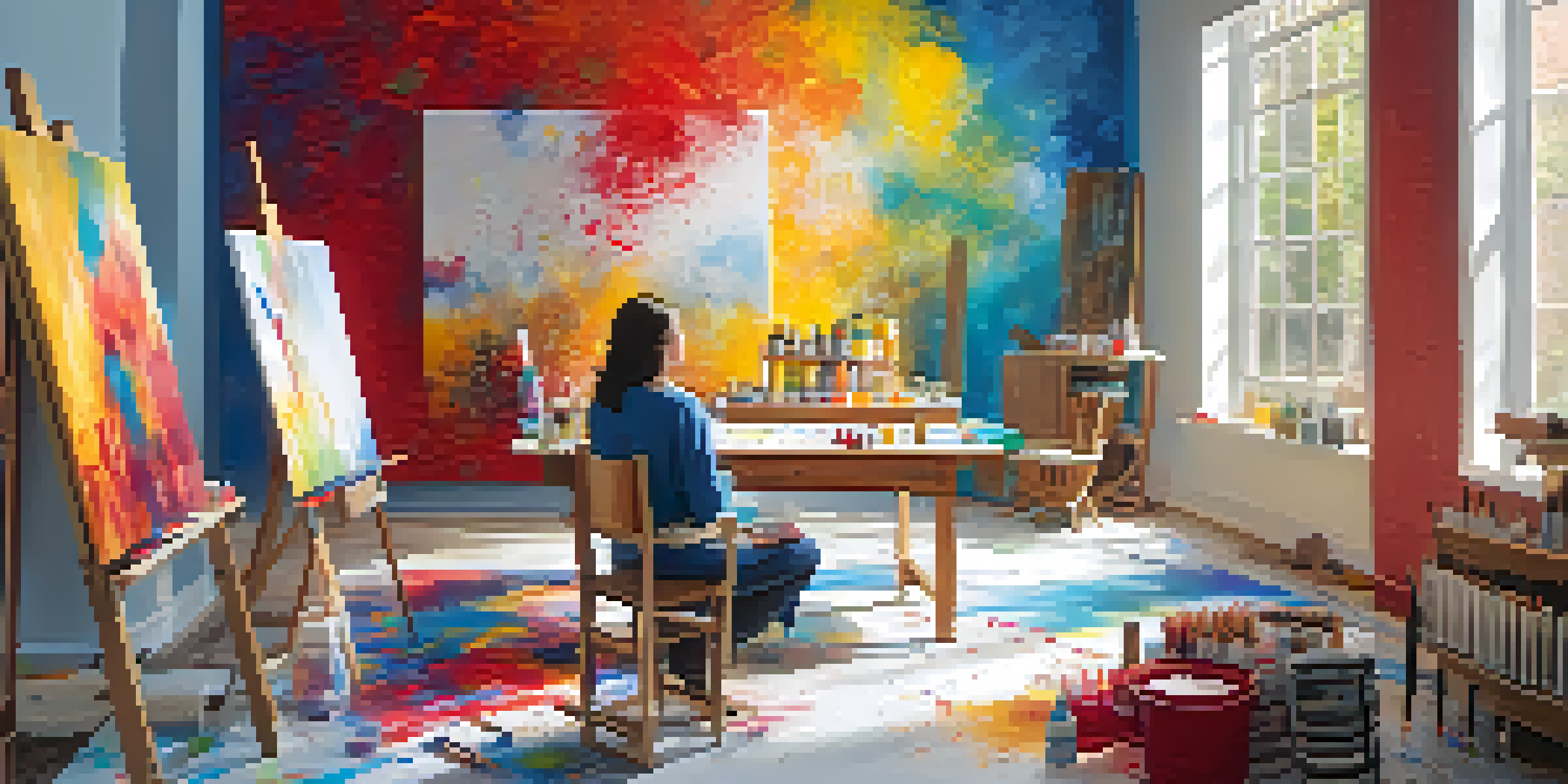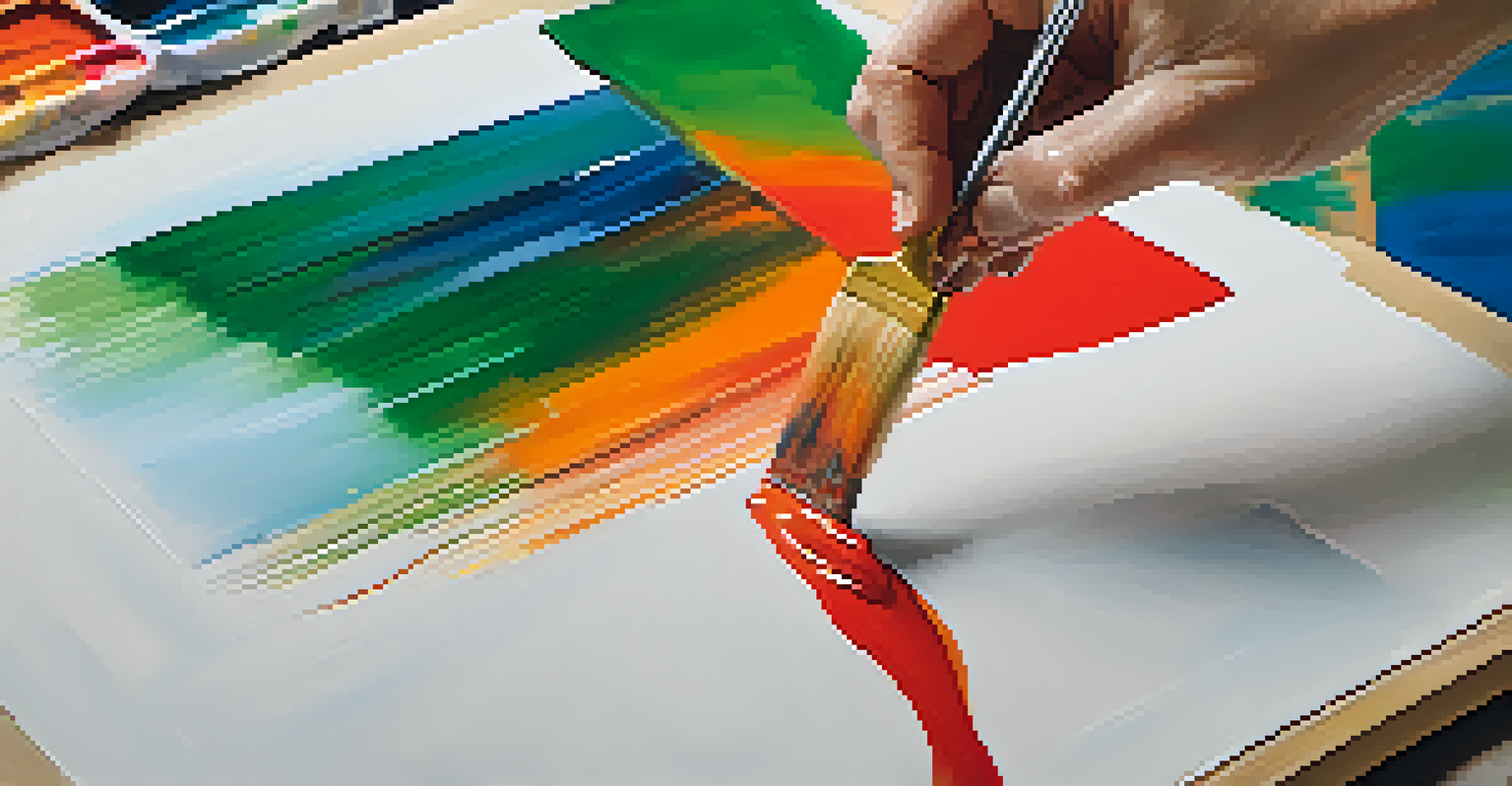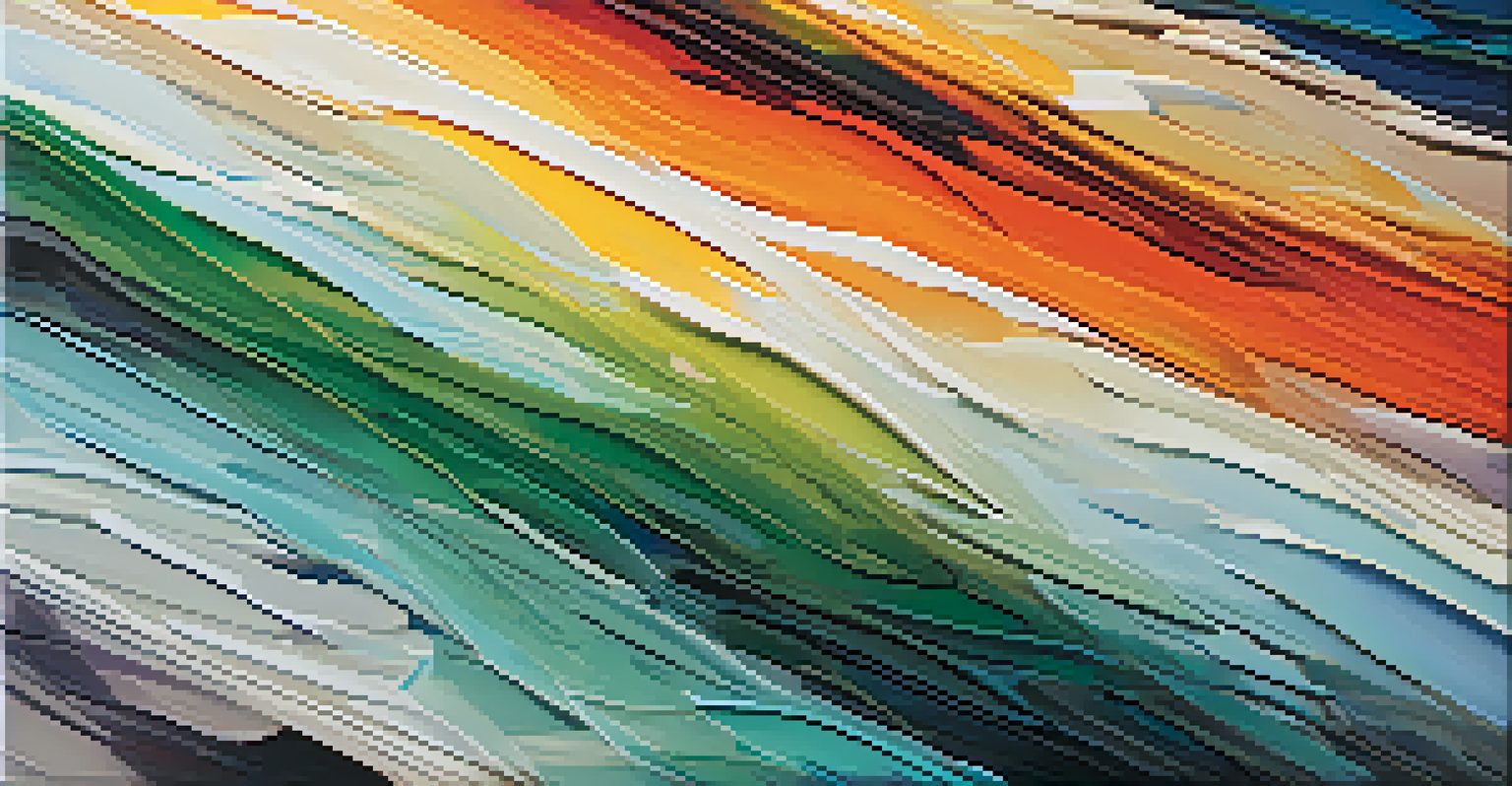The Healing Power of Abstract Painting in Art Therapy

Understanding Art Therapy and Its Benefits
Art therapy combines creative expression with psychological healing, allowing individuals to explore their emotions in a safe space. By engaging in artistic activities, people can communicate feelings that might be difficult to express verbally. This therapeutic approach can promote self-awareness, reduce anxiety, and aid in emotional regulation, making it a valuable tool for mental health.
Art is the most beautiful of all lies.
For many, the act of creating art can be a form of mindfulness, helping to ground them in the present moment. Art therapy is not about creating a masterpiece; it’s more about the process and the feelings that emerge during creation. As individuals immerse themselves in art, they often find clarity and relief from their inner turmoil.
The flexibility of art therapy means it can be tailored to suit different needs and preferences, appealing to a wide range of individuals. From children to adults, everyone can benefit from this non-verbal form of expression. Ultimately, art therapy nurtures creativity and encourages healing through self-exploration.
The Role of Abstract Painting in Art Therapy
Abstract painting stands out in art therapy due to its freedom and lack of constraints. Unlike realistic painting, abstract art allows individuals to express their feelings without the pressure of creating something recognizable. This can be particularly liberating for those who feel inhibited in their creative abilities, as it emphasizes emotional expression over technical skill.

When individuals engage in abstract painting, they often find themselves exploring their subconscious mind. The spontaneous nature of abstract art encourages them to experiment with colors, shapes, and textures, which can lead to unexpected insights about their emotions and experiences. This exploration can serve as a mirror, reflecting inner struggles and triumphs through visual representation.
Art Therapy Enhances Emotional Healing
Art therapy promotes emotional healing by allowing individuals to express complex feelings through creative activities.
Moreover, abstract painting can evoke a range of emotions, from joy to sadness, and everything in between. The colors chosen and the way they are applied can convey feelings that words may fail to express. This emotional connection makes abstract painting a powerful tool in therapy, allowing for deeper healing and understanding.
How Abstract Painting Facilitates Emotional Expression
One of the primary benefits of abstract painting is its ability to facilitate emotional expression. For many, traditional forms of communication are insufficient when dealing with complex feelings. Abstract painting provides an alternative outlet where emotions can flow freely, often leading to cathartic experiences.
Every artist dips his brush in his own soul, and paints his own nature into his pictures.
As individuals pour their emotions onto the canvas, they may discover new ways to articulate their feelings. For example, using bold strokes might represent anger, while soft colors can symbolize tranquility. This visual language helps individuals process their experiences and develop insights into their emotional states, fostering healing.
Additionally, the non-judgmental nature of abstract painting allows for a safe space to explore difficult emotions. Participants are encouraged to embrace imperfection and spontaneity, which can be incredibly freeing. This acceptance can lead to profound personal growth and a stronger connection to one’s inner self.
Connecting with the Inner Self Through Art
Abstract painting can serve as a bridge to connect with one's inner self, fostering self-discovery and personal insight. As individuals engage in the creative process, they often enter a state of flow, where time seems to stand still, and they can focus solely on their emotions and thoughts. This deep connection can uncover hidden feelings and desires that may have been suppressed.
Through this process, participants often gain a better understanding of their identity and how their experiences shape who they are. For instance, a person might find themselves drawn to specific colors or patterns that resonate with their current emotional state. Recognizing these patterns can lead to meaningful revelations and a greater sense of self-awareness.
Abstract Painting Fosters Self-Discovery
Engaging in abstract painting helps individuals connect with their inner selves, leading to greater self-awareness and personal insight.
Moreover, this connection with the inner self can empower individuals to embrace their unique stories. By acknowledging their feelings and experiences through abstract painting, participants can cultivate self-acceptance and resilience, which are crucial for emotional healing. This journey of self-exploration is a vital aspect of art therapy.
The Therapeutic Process of Creating Abstract Art
Creating abstract art in a therapeutic context involves a process that prioritizes exploration and spontaneity. Participants are often encouraged to let go of expectations and allow their intuition to guide their creative choices. This process not only fosters creativity but also helps individuals confront and process their emotions in a meaningful way.
As they create, individuals may experience a range of emotions, from frustration to joy. These feelings can serve as indicators of their emotional state and can prompt further exploration. For example, if a participant feels overwhelmed during the painting process, it might signal unresolved issues that need attention, leading to deeper discussions in therapy.
Ultimately, the therapeutic process of creating abstract art encourages individuals to engage with their emotions actively. This hands-on approach can be incredibly empowering, allowing them to reclaim control over their feelings and experiences. The artwork becomes a tangible representation of their emotional journey, serving as a powerful tool for reflection and healing.
The Impact of Color and Form in Abstract Painting
In abstract painting, color and form play a significant role in conveying emotions and experiences. Different colors can evoke specific feelings; for example, warm colors like red and orange often represent passion and energy, while cool colors like blue and green can signify calmness and tranquility. Understanding this connection can empower individuals to choose colors that resonate with their emotional state.
Shapes and forms also contribute to the emotional impact of abstract art. Sharp, jagged shapes might express chaos or anger, while smooth, flowing lines can evoke a sense of peace. By experimenting with various forms, individuals can further articulate their emotions and experiences, creating a visual narrative of their inner world.
Color and Form Convey Emotions
In abstract painting, the use of color and form plays a crucial role in expressing emotions and enhancing emotional awareness.
This exploration of color and form not only enhances artistic expression but also fosters emotional awareness. As individuals reflect on their choices, they often gain insights into their feelings and thought processes. This awareness can lead to greater emotional intelligence and a more profound understanding of oneself.
Real-Life Examples of Healing Through Abstract Painting
Many individuals have found healing through abstract painting as part of their art therapy journey. For instance, a young woman dealing with anxiety discovered that using bold colors and chaotic brush strokes allowed her to express feelings she had long suppressed. This realization helped her recognize the importance of acknowledging her emotions, leading to significant breakthroughs in her therapy sessions.
Similarly, a veteran struggling with PTSD turned to abstract painting to process his traumatic experiences. Through the creation of abstract pieces, he began to confront his emotions in a safe space. This process not only provided him with an outlet for his pain but also facilitated discussions with his therapist, creating a pathway for healing.

These real-life examples highlight the transformative power of abstract painting in art therapy. By allowing individuals to express themselves freely, abstract art can lead to healing, self-discovery, and emotional growth. Each brushstroke becomes a step toward understanding and acceptance, illustrating the profound impact of creativity on mental health.